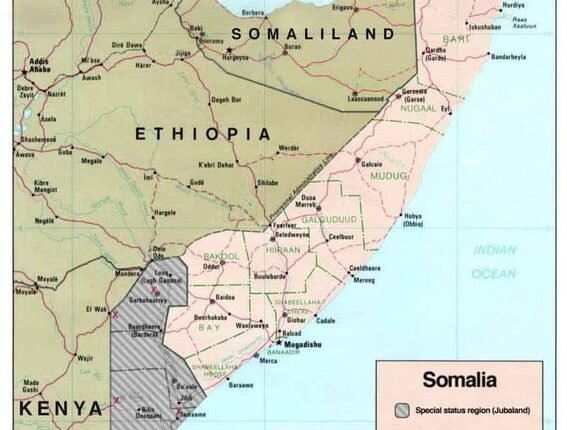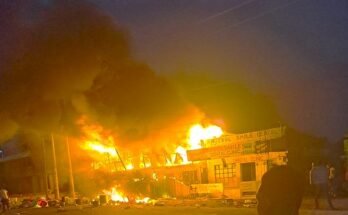Kenyan motorists and families were met with yet another money blow on July 14, 2025, when the Energy and Petroleum Regulatory Authority (EPRA) announced a sudden increase in petrol prices, which took effect immediately. In its latest monthly review, EPRA raised petrol, diesel, and kerosene costs by Sh8.99, Sh8.67, and Sh9.65 per liter respectively. This makes the new Nairobi rates as follows:
Petrol – Sh186.31 per liter
Diesel – Sh171.58 per liter
Kerosene – Sh156.58 per liter
The hike, though predicted by some analysts, has sparked renewed public outrage, especially in the midst of rising living costs, a faltering shilling, and stagnant pay. The vast majority of Kenyans are questioning the same thing: How much further can we climb before something snaps?
As assessed by EPRA, the price revision is an indication of the direction of global oil markets and not domestic policy realignments. The price of global crude has been increasing sharply due to geopolitical tensions, particularly ongoing tensions in the Middle East a region that produces most of the world’s crude.
Up for the first time in six months, as of June 2025, Kenya’s gasoline prices reached USD 1.37 a liter from USD 1.35 in May. It’s a trend of gradual but steady monthly increases, and while this is marginal by dollar measure, in local terms, it is intensified by a depreciating Kenyan shilling, higher taxation, and importation costs.
Kenya is dependent on foreign fuel. Any changes in international oil supply whether from OPEC production cuts, regional strife, or Red Sea and Persian Gulf shipping interruptions affect pump prices directly.
What the majority of Kenyans fail to realize is that nearly half the money they spend at the pump line is given as tax. According to the available EPRA statistics:
Excise duty
VAT (Value Added Tax)
Road Maintenance Levy
Petroleum Development Levy
Import Declaration Fee
.all contribute to the final price.
For example, on every liter of petrol bought in Nairobi, more than Sh80 is remitted to the government as taxes and levies. This has led some civil society organizations to criticize the government for milking fuel as a “cash cow,” disproportionately harming poor households and informally employed people reliant on transport.
The ripple effect of the fuel rises is swift and expansive. Even prior to this, matatu owners in Nairobi and other towns have raised their fares by 10% to 20% because of heightened operating expenses.
In a high-road-commodity economy, rising fuel prices automatically translate to rising prices for ubiquitous commodities. Some of these are staples like maize, sugar, and cooking oil. For the majority of Kenyans living below the poverty line well over 16% of the nation’s population, according to KNBS this puts too much strain on already pinched household budgets.
Kerosene, which is widely utilised by poor families for cooking and illumination, experienced the largest increase at Sh9.65 a liter. For those families that do not enjoy electricity or LPG, this latest increase could mean an either-or scenario of dinner or house illumination.
The Kenyan government has remained relatively silent regarding the recent rises in fuel prices, with EPRA’s announcement proffering little relief measures or policy alternatives. Nevertheless, sources reveal that the Ministry of Energy is considering strategic reserve inventories of fuel and price stabilization processes, especially in the case that tensions abroad escalate.
Critics indicate this is small, belated. “The government can no longer continue blaming international markets,” reasoned a senior policy analyst for the Institute of Economic Affairs (IEA-Kenya). “There’s a structural tax problem that needs to be addressed, or risk mass social unrest.”
With the world’s energy markets becoming increasingly unstable due to climate-related disruptions, regional tensions, and a global movement away from fossil fuels, it’s not difficult to envision that prices such as this spike become the norm. As high as Kenya is on oil imports, it’s still vulnerable unless it diversifies its sources of power.
Other experts have urged the government to expedite investment in electric vehicles (EVs), clean infrastructure, and public transport, with the only escape from this cyclical crisis being long-term measures.
In the short term, there is not much consumers can do. Some of the possible mitigation strategies include:
Carpooling and shared travel to reduce per capita use of fuel
Utilizing LPG or solar cooking wherever possible
Advancing policy change through public civil action
Public civil society groups such as Kenyans for Economic Justice are now organizing towards a public petition to investigate the tax regime on fuel commodities, requesting more transparency on fuel levy pricing and spending.
While global oil shocks, incompetence in policy response, and overtaxation continue to weigh the common Kenyan down, the latest fuel price hike could very well prove to be the camel’s breaking straw. While global supply lines and wars are beyond Kenya’s control, tax policy choice, subsidy regime, and the level of expenditure on infrastructure are not.
The question now is: Will the government act or wait until anger burns to the streets once more?
‘How Are We Supposed to Survive?’ Kenyans React to July Fuel Hike



